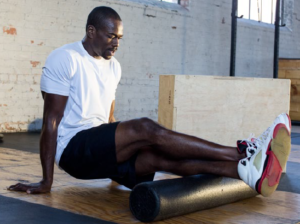Whether you are training yourself or your clients for weight loss, a sport, or a marathon – incorporating recovery techniques and rest days will not only give the muscles and joints a break but also help the body perform exercise better over time. According to Wendell Liemohn, Ph.D and Fellow in ACSM and in the American Academy of Kinesiology and Physical Education,
“having functional ROM (range of motion) at all joints of the musculoskeletal system is desirable to ensure efficient body movement; this is one reason why flexibility is a key component of physical fitness.”
Recovery and flexibility techniques such as calisthenics, stretching, and sports massage are the silent partners in training programs of all fitness levels by helping to increase overall joint range of motion.
Flexibility training is gentle enough to be performed daily. Spend 10-20 minutes on rest days to stretch the muscles that take a beating throughout the week such as the calves, hamstrings, glutes, shoulders, and low back. As the name “warm up” suggests, you might consider performing some light, dynamic movements before a workout such as standing hip circles or jumping jacks followed by some static stretches. Light activity and stretching will warm the soft tissues of the body to prepare for more intense exercise. At the end of a workout, you have increased blood flow and a slightly elevated core body temperature. Take advantage of this internal environment to increase your flexibility as muscles, tendons and ligaments move better when they are warm.
Sports massage can certainly help speed up the body’s recovery time and often includes self-myofascial release techniques that involve applying pressure to a tender spot, or “knot”, on a tendon or muscle belly. We would all like to have a sports massage therapist on call to work on our tired bodies. But since that isn’t always possible, there are self-myofascial release tools available such a foam roller, massage sticks, and myo-release balls that allow you to achieve similar benefits without a massage therapist. Self-myofascial release can mimic a sports massage by using rollers of varying sizes, shapes, and densities to apply pressure and “untie the knots” that tend to form in our muscles when training. Most of these accessories are small, light-weight and easy to carry in a gym bag.
 |
For Beginners – Power Systems HD Foam Roller
|
 |
Next Level Foam Rolling – The GRID
|
 |
For targeted relief – total body:
|
Enhance the effectiveness of your training programs for years to come by adding some of these recovery techniques.
Reference: Howley, Edward T. Franks, B.Don. Health Fitness Instructor’s Handbook – Fourth Edition. Champaign: Human Kinetics; 2003. 146p.


You must be logged in to post a comment.